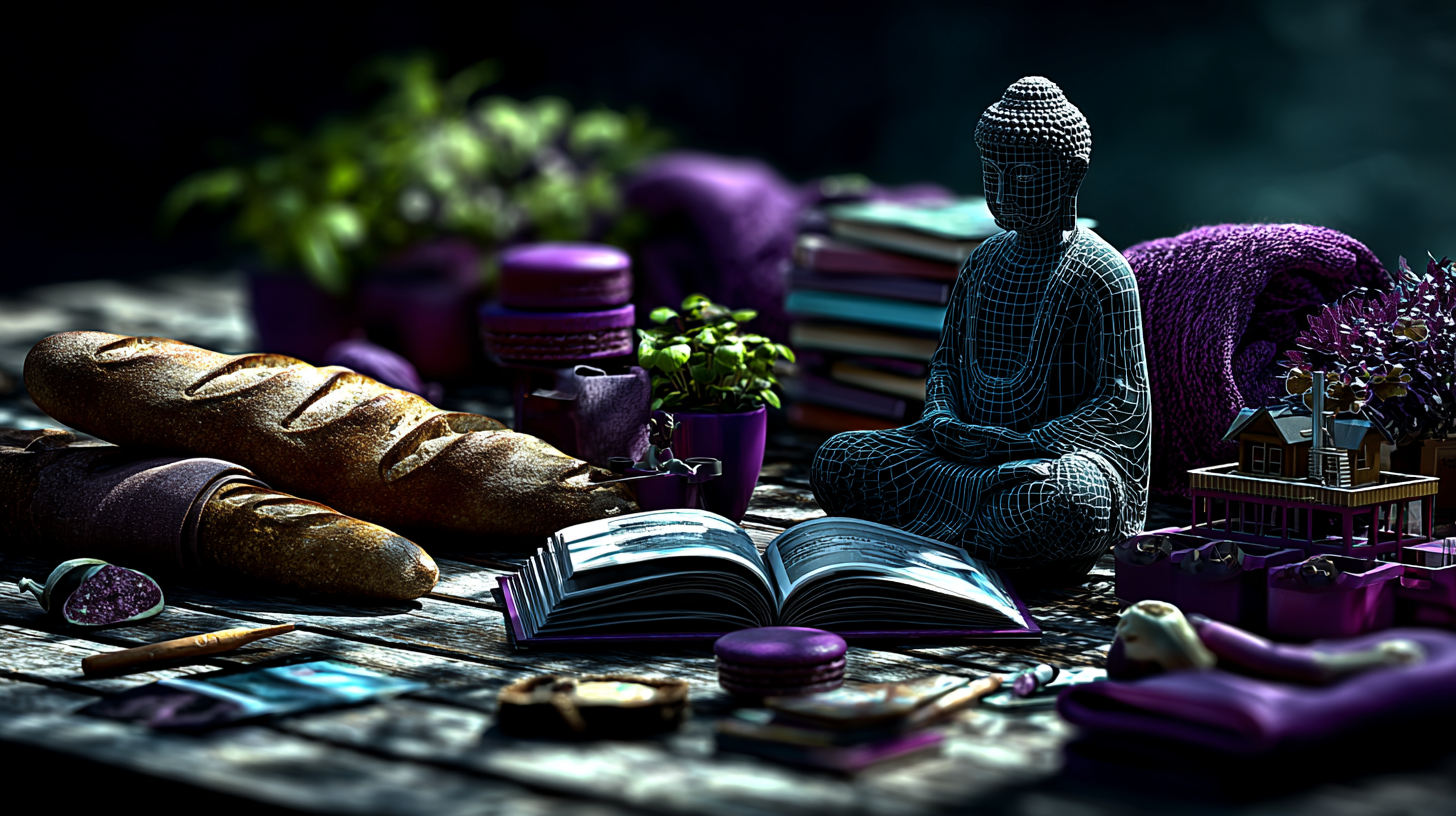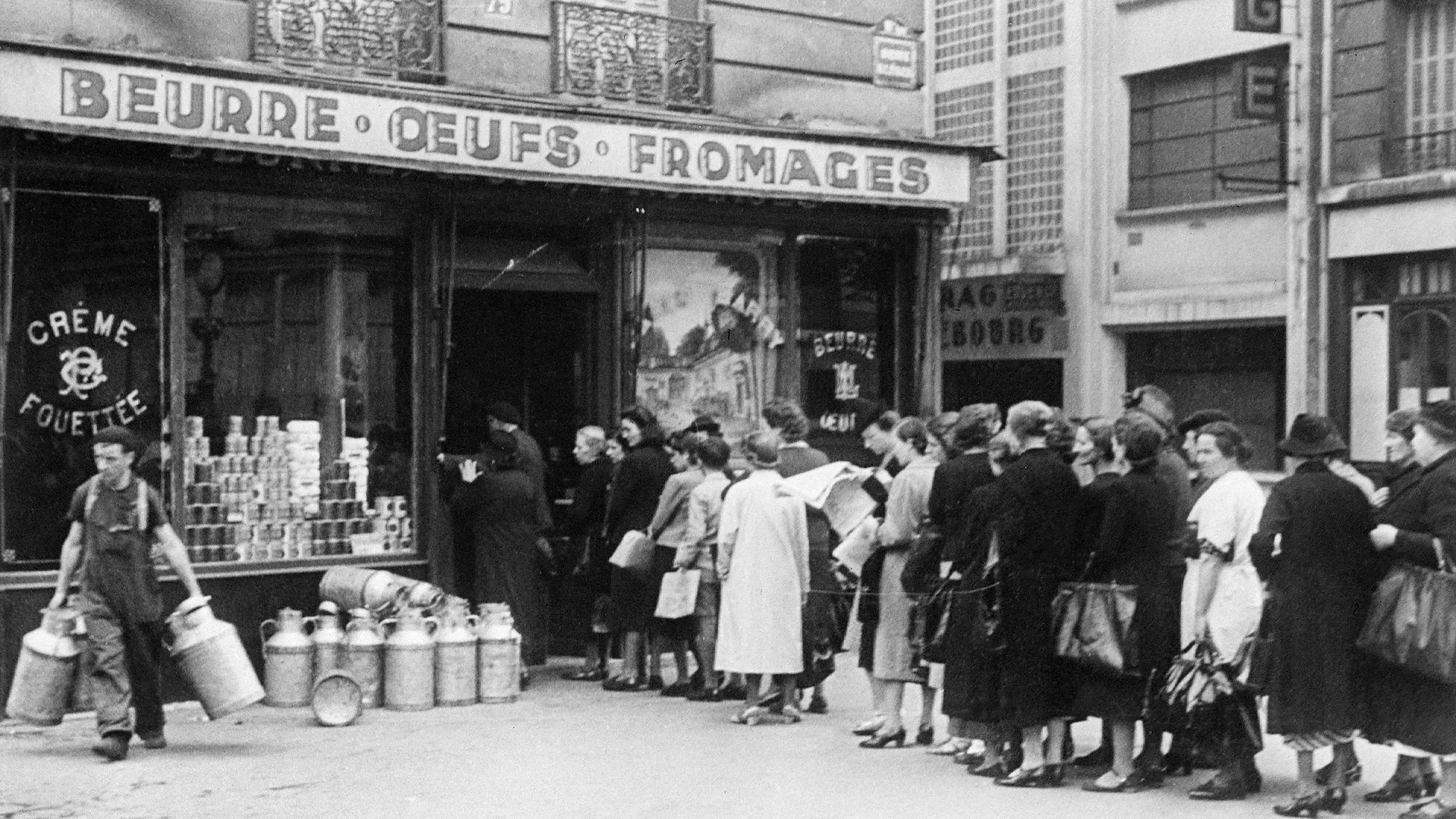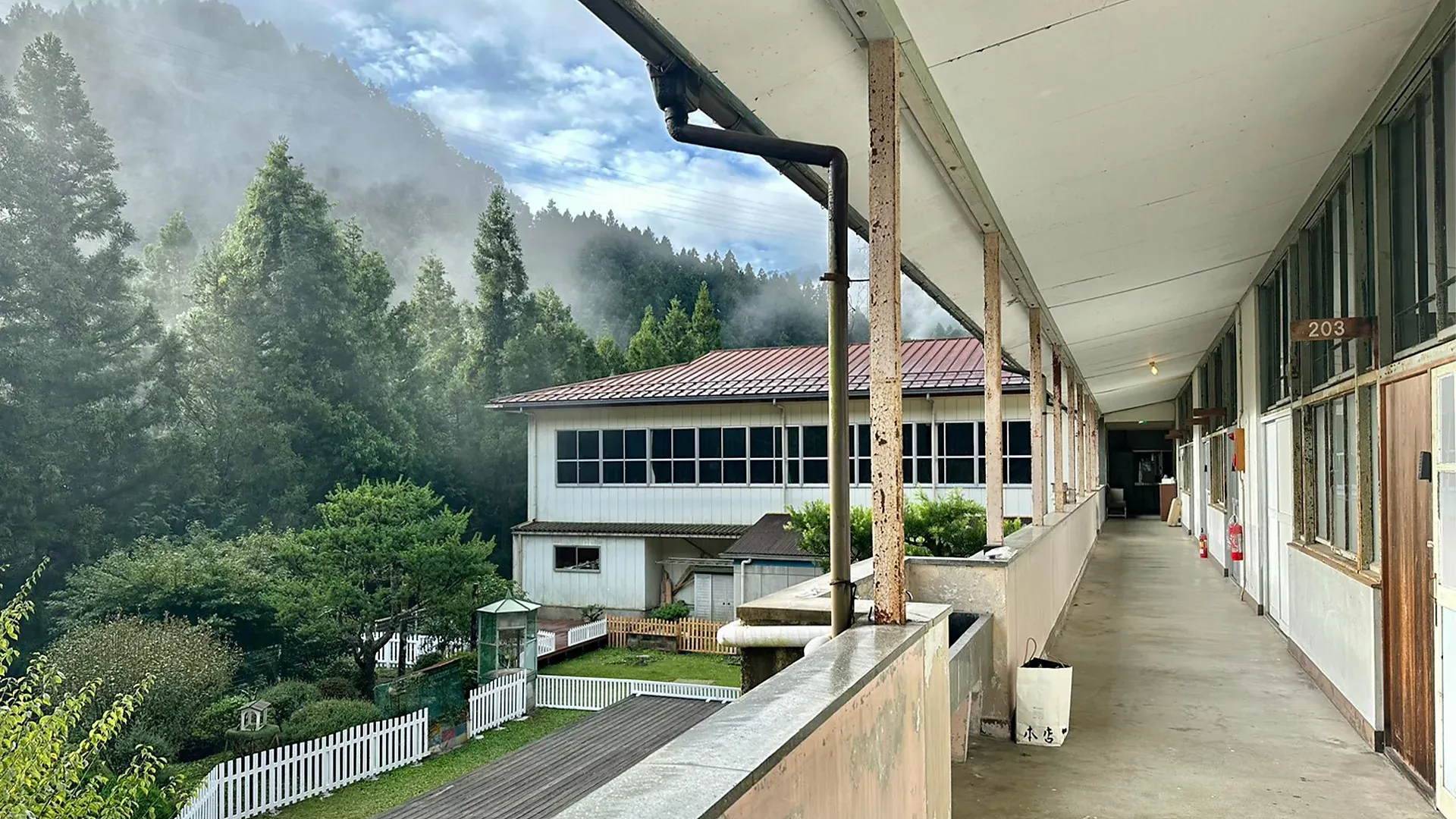Coffee With Tanya #29
Talking about: Meditation for creativity, French wartime foods gone trendy, adorable owls in towels, Japanese school hotels, and July's history.

Hello, coffee lovers! Though in this summer heat, I suspect many of you have switched to iced coffees, cold brews, and maybe even vacation cocktails 🍹
July is my birthday month, and I just returned from a blissful "doing nothing" vacation where I recharged my curiosity batteries, and now I'm buzzing with excitement about all the fascinating discoveries I've collected for you.
This feels like the perfect time to explore the unexpected - from ancient meditation secrets to abandoned schools turned dream hotels. ☀️
Here's what we have on our menu for today:
- Food - How World War II created modern French food trends 🥖
- Wellness - When silence becomes your creative superpower 🧘♀️
- Adorable - The internet's most wholesome wildlife project 🦉
- Travel - When empty schools become dream hotels 🏫
- Word bites - Komorebi 🔡
- July in History 🌍
The best way to take care of the future is to take care of the present moment // Thich Nhat Hanh
How World War II Created Modern French Food Trends 🥖
Foodies, this one is for you!
Picture this: By 1942, some French citizens were surviving on just 1,100 calories per day.
When Germany occupied France in 1940, daily life transformed dramatically. White bread vanished, replaced by darker loaves extended with ingredients like bran or chestnuts. Coffee substitutes made from roasted acorns became common. Even the "forgotten vegetables" found on upscale Parisian menus post-occupation were, before the war, considered animal feed.
The survival innovations: The French got creative with what they had.
- Chicory coffee replaced the real thing (still popular today!).
- Jerusalem artichokes and swedes substituted rationed potatoes.
- Even Paris' Tuileries gardens became collective vegetable plots with window boxes sprouting carrots and leeks.
The post-war rejection: After liberation, the French wanted nothing to do with wartime foods.

"My mother never cooked a swede in her life," recalls one author whose family survived the occupation (read more here). Jerusalem artichokes became "taboo." Dark bread was abandoned for pristine white baguettes as people desperately tried to forget the hunger years.
The modern comeback: Fast-forward 80 years, and those same "survival foods" are everywhere!
Jerusalem artichokes dominate trendy Paris bistros. Chefs proudly call them "les legumes oubliés" (the forgotten vegetables). Sourdough and whole grain breads are making a comeback as baguette consumption drops 25%.
The lasting legacy: The real legacy wasn't the recipes – it was the no-waste mentality.
As one historian puts it: "You know the value of food when you don't have any."
Today's foraging classes and "farm-to-table" movements are essentially repackaging wartime survival techniques. What once symbolized desperation now represents sophistication and environmental awareness.
Sometimes the most innovative food trends aren't new at all – they're just old wisdom waiting for the right moment to resurface. ✨

When Silence Becomes Your Creative Superpower 🧘♀️
Picture this: Lady Gaga sitting quietly with her eyes closed for 20 minutes, no audience, no cameras. Just silence.
Paul McCartney calls it "pressing a reset button for the mind."
David Lynch describes it as "diving beneath turbulent waves into a calm ocean of ideas."
Welcome to the not-so-secret weapon of creative legends: Transcendental Meditation.
What's the deal? TM isn't some mystical ritual requiring years of training. It's simple: sit comfortably, close your eyes, and silently repeat a personal mantra for 20 minutes. That's it. Yet from this simplicity emerges what artists call their "creative wellspring."
The famous converts:
- The Beatles - their 1968 India trip influenced entire albums
- Jerry Seinfeld - practices twice a day, calls it "a phone charger for your body and mind"
- Hugh Jackman - credits it with reducing anxiety and improving focus
- Oprah - loved it so much she brought TM teachers to her entire Harpo Productions team
The three superpowers they swear by:
- Creative flow: David Lynch's metaphor is perfect - when your mind is agitated, you only catch "small fish" (obvious ideas). But dive into the calm depths through meditation, and you catch the "big fish" - those surprising, innovative thoughts swimming below.
- Emotional armor: Creative life is emotionally turbulent. One day's triumph becomes the next day's self-doubt. TM acts like psychological armor against the chaos of public life, criticism, and creative pressure.
- Laser focus: In our age of infinite scrolling and constant alerts, meditation sharpens concentration. Artists report entering flow states more easily, whether on stage, in the studio, or writing.
The modern shift: Even tech companies are catching on. Salesforce has meditation rooms. Entire creative teams take group meditation breaks. The message is clear: silence isn't unproductive - it's where the most original ideas have room to surface.
As Madonna put it: "Meditation showed me how much energy silence has."
In our noisy world, maybe the most radical thing you can do is... nothing. For 20 minutes. ✨
With over a decade of personal meditation practice, I have come to understand its transformative power in all areas of my life. What about you? do you ever discover your best creative ideas in moments of quiet, away from the noise??

The Internet's Most Adorable Wildlife Conservation Project 🦉
Sometimes the internet gives us exactly what we didn't know we needed: owlsintowels.org.
This delightful website showcases photos of owls wrapped in towels during wildlife rehabilitation. When injured owls need treatment, rehabilitators wrap them in towels to keep them calm, creating the most adorable "owl burritos" you've ever seen.
The genius: One person decided to collect these images to celebrate wildlife rescuers. No ads, no agenda – just pure internet joy.
Just check them out!
Why?
Why not?!

When Empty Schools Become Dream Hotels 🏫
Japan closes 450 rural schools every year.
But some brilliant minds are turning these abandoned classrooms into the most unique hotels you've ever seen.
Meet Hare to Ke, where you literally sleep in former school desks surrounded by mountains in rural Shikoku.
The twist?
Her son's asthma completely disappeared in the clean mountain air 🗻.
Pure magic ✨.
Designer Shuko Uemoto visited this tiny mountain town and felt something shift. When she saw the call to revitalize 28 empty schools, she knew she'd found her purpose.
"The sound of the river, the sunlight, the silence – it all felt full of potential."
The transformation:
- Graduation murals painted by former students still line walkways
- Eye charts and chalkboards create nostalgic classroom vibes
- Cedar-lined sauna overlooking the forest
- Mountain spring water while deer call outside
This isn't renovation.
It's resurrection. The hotel's name references "hare" (festivals) and "ke" (everyday life) – ancient Japanese concepts of balance lost in modern hustle culture.
City dwellers rediscover profound quiet they've never experienced through "Sleep Trip" experiences with custom herbal teas and aromatherapy.
The emotional impact:
One elderly woman returned, opened an old graduation album: "That's me!"
Even the former principal visits regularly. The school that once stood dark now has its lights back on, giving locals their emotional connection to place. Thirteen other schools in the area have followed suit, proving that sometimes the most innovative solutions come from refusing to let beautiful spaces die.
Beauty lives on. 🌸

Word Bites! 📚🌟
Komorebi 🌿
This beautiful Japanese word captures something we've all experienced but never had a name for: the interplay of light and leaves when sunlight filters through trees.
Komorebi isn't just about the visual effect; it's about that specific feeling of tranquility when light dances around you. It's the peaceful moment when you're walking through a forest and suddenly notice how the sunlight creates patterns on the ground, shifting and changing with each breeze.
The word combines "ko" (tree leaves), "more" (leaking through), and "bi" (sun rays). Japanese culture has this incredible ability to name the poetry in everyday moments that other languages leave unnamed.
Perfect for summer walks when you need to slow down and notice the magic happening right above your head. ☀️
July in History 🌍
- July 1, 1867 – Canada Becomes a Nation 🇨🇦
The British North America Act created the Dominion of Canada, uniting four provinces and establishing the foundation for modern Canada's federal system. - July 4, 1776 – American Declaration of Independence 🇺🇸
The Continental Congress approved the Declaration of Independence, formally breaking ties with Britain and establishing the philosophical foundation for American democracy. - July 14, 1789 – Storming of the Bastille 🇫🇷
Parisian revolutionaries stormed the fortress-prison, marking the beginning of the French Revolution and inspiring democratic movements worldwide. - July 20, 1969 – Moon Landing 🌙 and my birthday (not 1969)!!
Neil Armstrong and Buzz Aldrin became the first humans to walk on the moon, with Armstrong's famous words "That's one small step for man, one giant leap for mankind." - July 25, 1978 – First Test Tube Baby Born 👶
Louise Brown, the world's first baby conceived through in vitro fertilization, was born in England, revolutionizing reproductive medicine and giving hope to millions.
That's all for today. Stay tuned for the next coffee with me in August! Don't forget to drink tons of water!!
You can also find me writing about Product management on Linkedin, rating movies on IMDB, or making playlists on Spotify.
BTW - TV Shows recommendations:
You're one of the curious souls who made it here. If there's a topic you'd like me to dive into, just send it my way. Ciao! ☕

If this piece was forwarded to you, sign up now to never miss a monthly edition!

